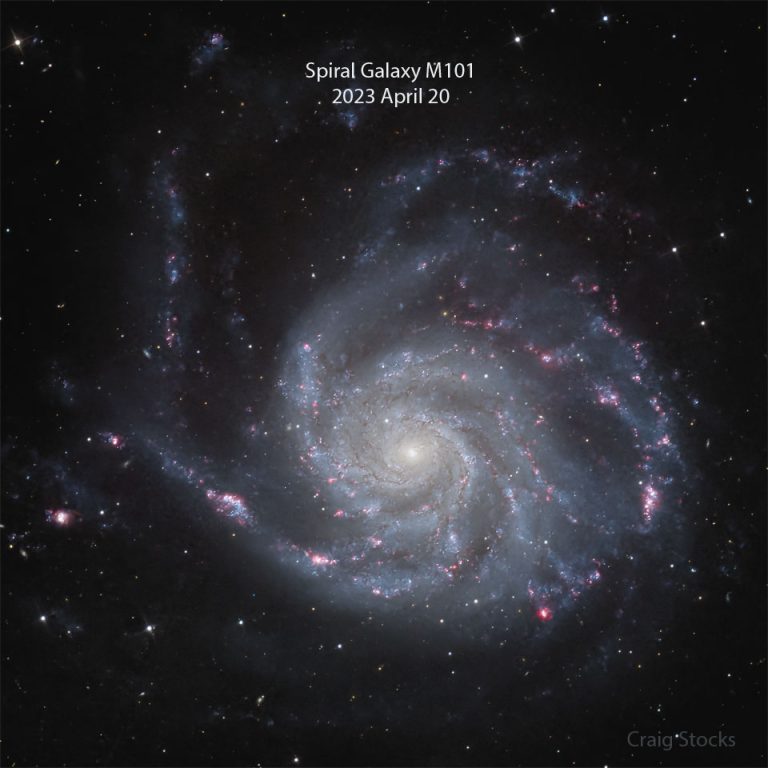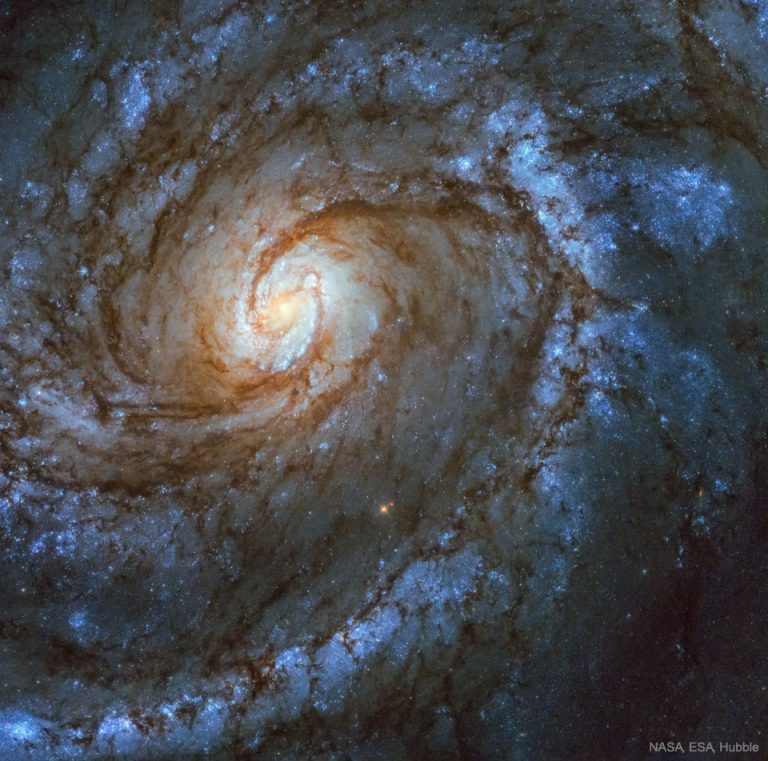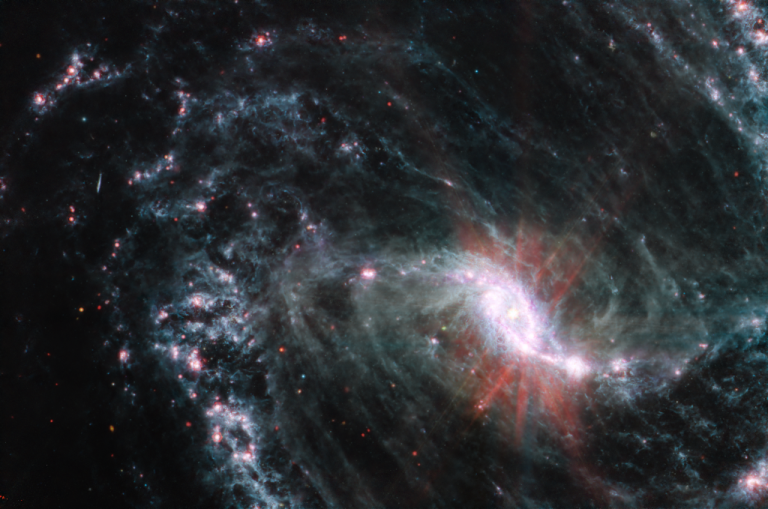模拟: 盘状星系的形成
2023年5月31日 Simulation: A Disk Galaxy Forms Video Credit: TNG Collaboration, MPCDF, FAS Harvard U.; Music: World’s Sunrise (YouTube: Jimena Contreras) Explanation: How did we get here? We know that we live on a planet orbiting a star orbiting a galaxy, but how did all of this form? Since our universe moves too slowly to watch, faster-moving computer simulations are created to help find out. Specifically, this featured video from the IllustrisTNG collaboration tracks gas from the early universe (redshift 12) until today (redshift 0). As the simulation begins, ambient gas falls into and accumulates in a region of relatively high gravity. After a few billion years, a well-defined center materializes from a strange and fascinating cosmic dance. Gas blobs — some representing small satellite galaxies…










